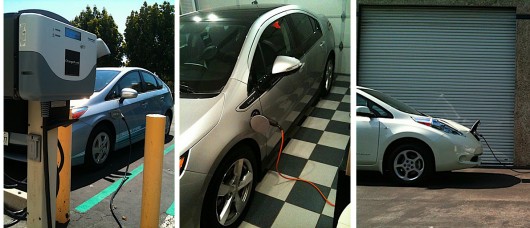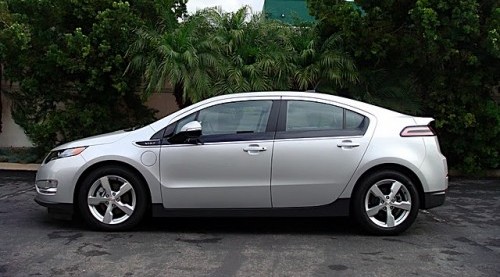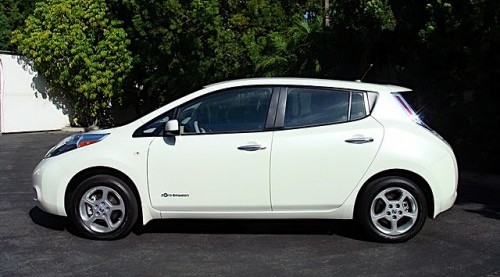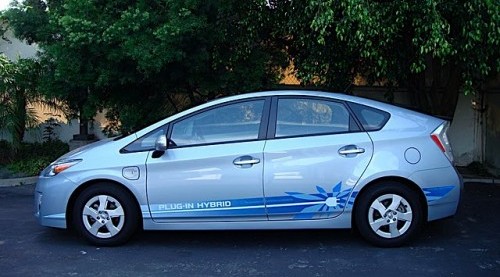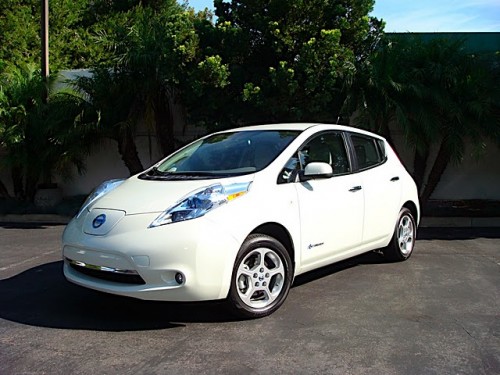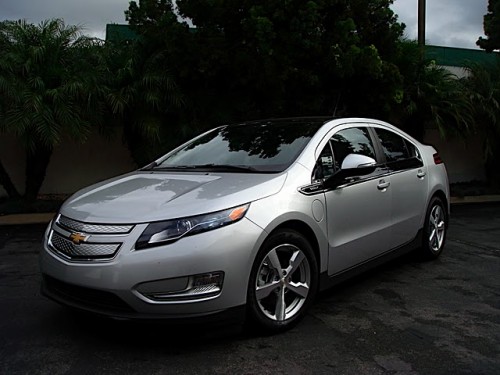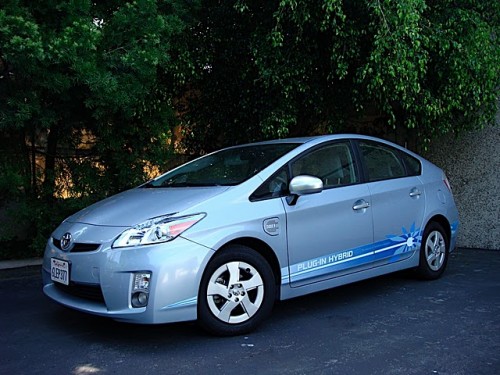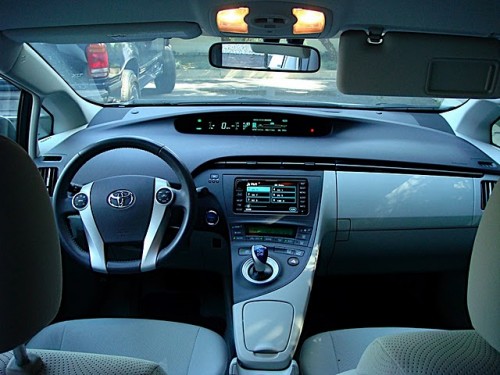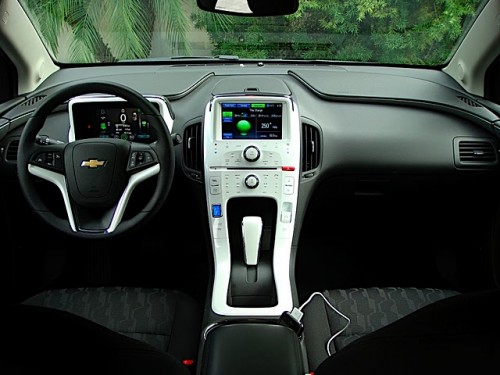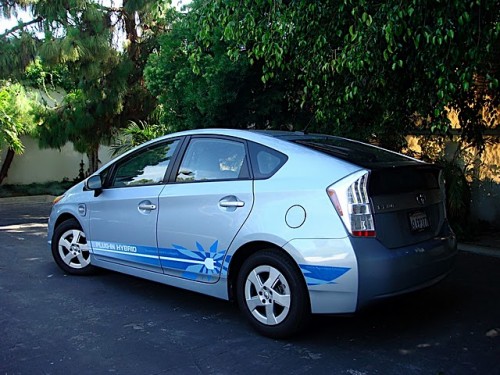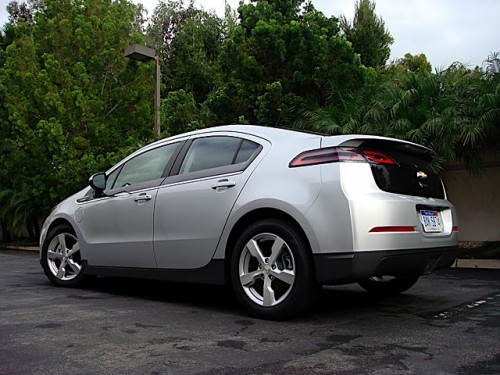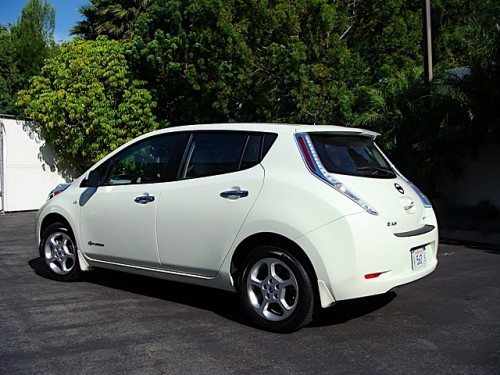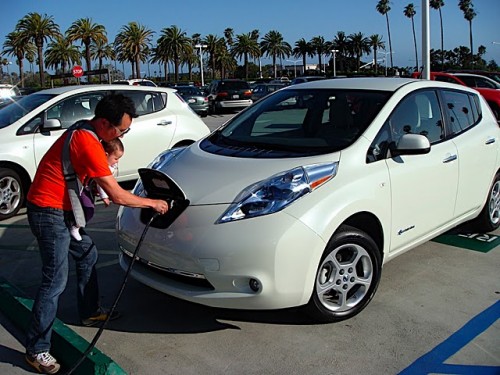AutoPacific’s 2011 Plug-In Car Supertest
- October 3, 2011
- Chevrolet, GM, Nissan, On The Road: Driving Impressions, More Categories...
- Posted by Ed Kim
- Comments Off on AutoPacific’s 2011 Plug-In Car Supertest
Without question, one of the most buzzworthy topics surrounding automobiles this year has been plug-in cars. Issues like fuel price instability, dependence on foreign oil (or oil of any sort!), and the environment have stirred the imaginations of many people. Could we really rid ourselves of oil-powered transportation? Could America really free itself of its addiction? At the very end of last year, the Chevrolet Volt and Nissan Leaf went on sale (retailing at $41,000 and $32,780, respectively, minus a $7,500 Federal tax credit), finally bringing plug-in transportation to the masses and, plug-in fans hope, heralding a new era in automotive history.
The Volt and Leaf are fundamentally different in that one (the Volt) has a backup gasoline engine to extend the car’s range after the battery’s juice runs out while the other (the Leaf) relies solely on battery power. That being the case, the Leaf has a much longer electric-only range (officially rated by the EPA at 73 miles to the Volt’s 35) since the car doesn’t have to package a gasoline engine and a fuel tank. Incidentally, once the Volt runs out of juice, it gets 37 MPG combined city/highway, according to the EPA.
Despite both Nissan and Chevrolet calling their vehicles “electric cars”, we really consider the Chevrolet Volt to be a plug-in hybrid as it ultimately uses both an electric and gasoline powertrain.
You would of course expect us to provide you with a back to back comparison of both cars, but we’ve gone and done one better than that. We were able to also acquire a prototype for the upcoming Toyota Prius PHV, the plug-in hybrid version of the Prius that debuts in March of 2012 at a starting price of $32,000 (minus a $2,500 Federal tax credit). Our test car isn’t identical to the production version available next year; the production version has a more lightweight and compact battery pack, improved in-car graphics, and Entune, Toyota’s new infotainment interface. But the basics are there, including up to a 15-mile electric range (much shorter than Volt) but about 49 MPG (much higher than Volt) when running in gasoline-electric hybrid mode, just like any other Prius.
All three of these cars are similar in size, but they differ wildly in philosophy and execution. Is there a clear winner here?
Exterior Styling
Styling is a very subjective thing. Some people want to blend in while others want to proudly trumpet who they are through their vehicle choice. All three cars here are compact hatchbacks, but they all look distinct from each other. The all-electric Leaf doesn’t share any of its sheetmetal with anything else in the Nissan lineup, but its overall look is tame and inoffensive. It looks like any number of generic small hatchbacks out there, despite its proprietary styling.
The Volt, on the other hand, is much more extroverted. It looks lower and sleeker, and has plenty of detailing to establish links to the original Volt concept car from 2007, which was admittedly much more rakish. Due to the production Volt being based on a conventional compact front wheel drive platform, its proportions had to become more conventional too, but there remains something of a sense of occasion to the car’s styling.
The Prius PHV looks just like any other Prius, save for some very subtle satin silver finishing on the door handles and rear hatch trim. It’s a very familiar shape, but the Prius’ iconic status among eco-friendly motorists means that it remains immediately identifiable as an automotive do-gooder. I mean, come on, see how this tree hugging car is being hugged back by the trees here?
Personally, I found the Volt’s styling to be the most appealing, but because (as we’ll see) the three cars vary so wildly in format and execution, consumers will likely choose one based on how it functions rather than how it looks.
Interior Room, Styling, and Technology
Despite the three cars’ similarity in terms of exterior size, their interiors vary greatly in terms of size due to their divergent battery packaging. The Prius is easily the most spacious for passengers. Its batteries are mounted in the cargo area under the floor, leaving the passenger cabin open and spacious. It has a particularly cavernous back seat and a light, airy feel up front. In terms of styling, it looks like the interior of any other Prius, which is to say somewhat futuristic but simultaneously a bit drab. In terms of in-car tech, there was virtually none. We’ll reserve judgment on both counts until we see the final production car with Toyota’s new Entune infotainment interface and improved on-screen graphics, as this prototype’s interior was crafted from a base 2010 model.
The Volt, due to its huge t-shaped battery pack, can only seat four occupants compared to the others’ five. Due to the low, sporty roof and low seating position, it also feels fairly tight inside. The cargo area isn’t particularly big either, and you have to really hoist heavy items over a high loading lip. It definitely feels special though, with imaginative shapes inside, very nice assembly quality, and cool features like a high-resolution screen with gorgeous graphics serving as the instrument cluster and a white iPod-like center stack (also with a large screen with gorgeously animated graphics) with touch sensitive labels rather than physical buttons. The car features OnStar, satellite radio, and a smartphone app that allows you to operate many functions (including setting charge times) remotely.
The Leaf seems like it should have a cavernous interior due to its long wheelbase, but thanks to the fact that its battery pack is mounted underneath the car, the car has a very high floor. This cuts down on usable legroom, especially for rear occupants. The cargo area isn’t long, but it’s very deep. If your cargo is stackable, you can fit quite a bit back there. As for its looks, it has a fairly high-tech yet friendly look. With its LCD instrument cluster and less flashy graphics, it doesn’t have quite the wow factor of the Volt’s interior, but it’s definitely a pleasant place to spend time. Its infotainment interface is straightforward and easy to use, and its navigation system shows nearby charging stations – though the list wasn’t quite complete. Various smartphone apps showed us charging stations that the Leaf’s navigation didn’t seem to be aware of.
Driving and Charging
None of these cars are sports cars, but all of them will get you down the road without drama and in comfort. The Leaf, and the Volt it’s running in electric mode, emit virtually no powertrain noise. Both feel similarly powerful under acceleration; electric motors have lots of torque. The Prius PHV behaves a bit differently. While running on pure battery power, it can run on electricity at speeds up to 62 MPH. That is, if you drive like there’s an egg under the accelerator pedal. Give it a firm prod, and the gasoline engine will switch on to assist in acceleration. Once the battery is depleted after about 12-15 miles, the car behaves like any other Prius, with the gasoline engine and electric motor working in harmony with each other. Once in hybrid mode, the car consistently achieved about 50 MPG. Plugging it into a household 110V outlet will bring the battery back to full charge in 3 hours, or 1.5 hours on a 240V charger.
Once the Volt’s batteries fall beneath a certain state of charge (about 35-40 miles, in our experience), the gasoline engine will turn on, like Prius. However, the gasoline engine does not directly power the wheels (there’s no mechanical connection there); rather, it serves to maintain the battery pack’s state of charge. Thus, the engine doesn’t necessarily rev in concert with the car’s speed or rate of acceleration, which can be an odd sensation at first. Once the gasoline engine comes on, our tester was consistently good for about 35 MPG, markedly less than the Prius’ 50 MPG. It takes about 10 hours to charge Volt on a 110V outlet, or about 4-5 hours on a 240V charger. Note that neither Prius or Volt ever need to be plugged in; both can be run purely on gasoline if need be.
The Leaf, of course, has no gasoline engine. In our test, the lithium ion battery pack was consistently good for about 75 miles. Yes, you do have to adjust your driving habits and plan your routes carefully, but in fairness the Leaf is really intended for drivers who have short, fixed routes each day. It’s a commuter, plain and simple. You drive to work and back, and charge it overnight. Charging takes about 23 hours on a 110V outlet, but virtually all owners will have a 240V charger installed at the house, which brings charge times down to about 7 hours.
Verdict? Or Is It Really That Simple?
When it comes down to it, these three plug-in vehicles all represent markedly different approaches to electrified motoring, and so as noncommittal as it sounds, there is no clear winner here. The best one for the job really depends on your planned usage. Those who drive long distances frequently but also do a lot of in-town driving might be best served by the Prius Plug-In Hybrid. While its EV range is short, its sub-$30,000 pricing (after the tax credit) and near-50 MPG hybrid mode fuel economy are very compelling.
By contrast, the Volt is ideal for someone who intends to commute on electricity the majority of the time (enabled by the 35 mile range), but needs that extra bit of flexibility on occasion provided by the gasoline range extender engine. Running the car on gasoline mode regularly isn’t particularly economical; $41,000 is a lot to pay for a 35 MPG car.
The Leaf is for the cutting edge driver ready to do away with gasoline altogether – and ready to drastically change his or her daily habits to suit. A short range and lengthy charge time mean constraints that aren’t for everyone, but most Leaf owners will have a traditionally powered gasoline vehicle in the household anyways for trips beyond the Leaf’s capabilities.
Cost no object, my personal favorite was the Volt. It was the best handling (dare I say fun to drive), and its interior and flashy displays imparted the most sense of occasion of the three cars. Its EV range is enough to cover almost all of my commute, so while I would have to still gas up on occasion, I would be using a minute fraction of what most drivers use. However, the Leaf and Prius PHV are plenty charismatic in their own right too, and if my personal commuting situation was different, my preference might well lean towards one of those.
What’s clear is that these three vehicles represent a radical shift in motoring and are a precursor to some big changes in the automotive landscape that we will experience soon. Given how appealing all three of these cars were, and given the societal implications they represent, I’m ready!
